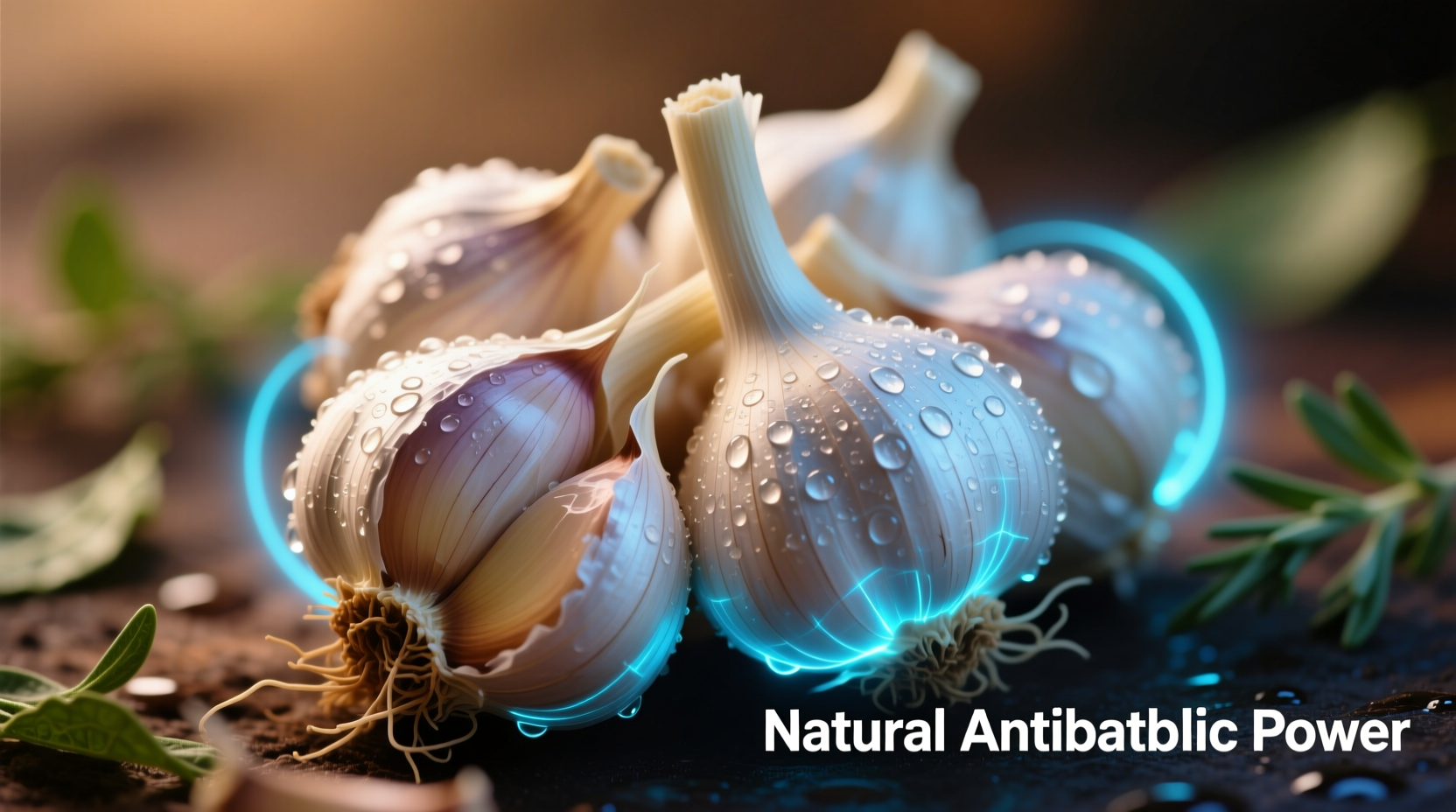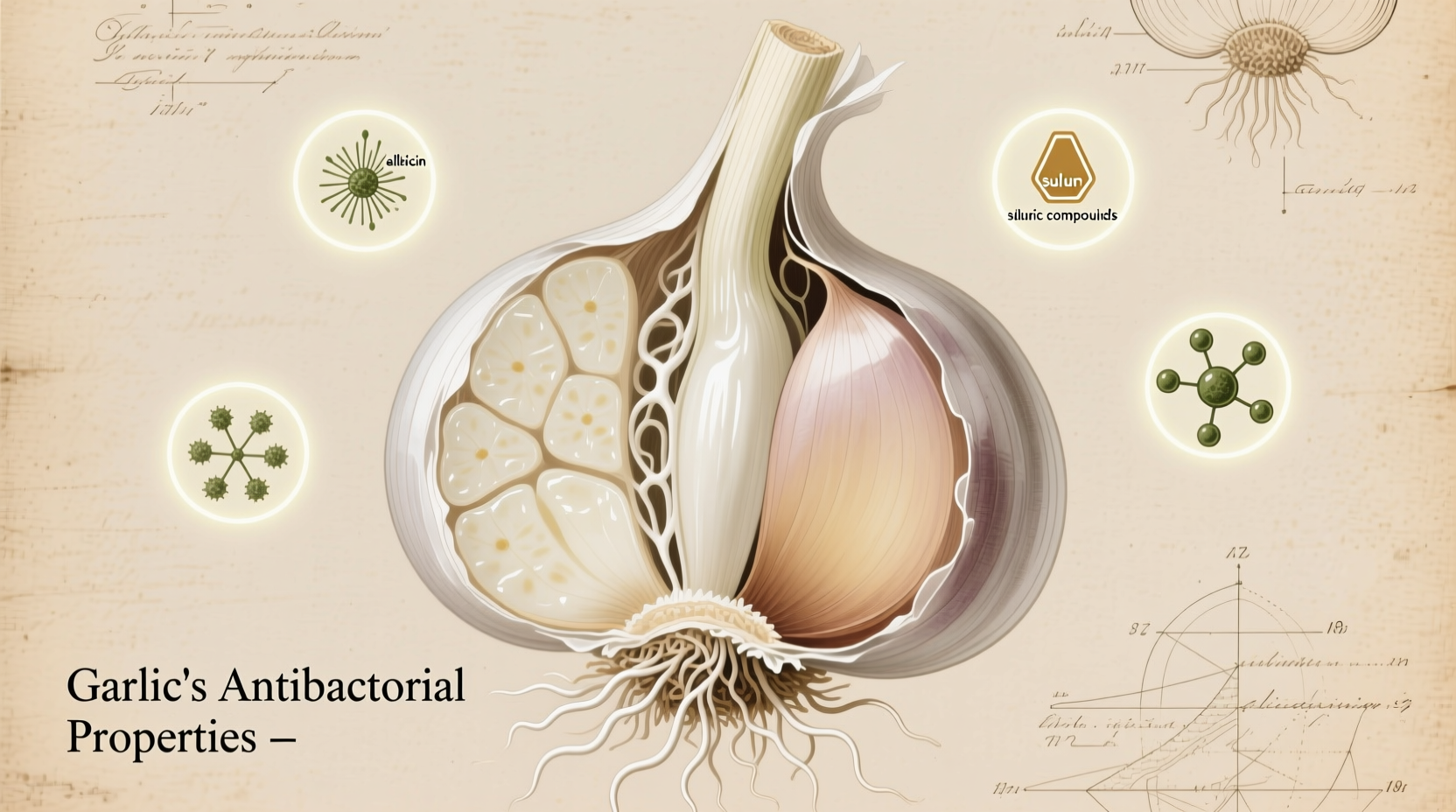For centuries, cultures worldwide have used garlic as a natural remedy for infections. Modern science now validates these traditional uses with compelling evidence about garlic's antibacterial capabilities. This article examines what rigorous research reveals about garlic's antimicrobial properties, how they work, and realistic expectations for their practical application.
The Active Compound: Allicin and Its Mechanism
When you crush or chop fresh garlic, an enzyme called alliinase converts alliin into allicin—the primary compound responsible for garlic's antibacterial effects. This reaction explains why freshly prepared garlic delivers stronger benefits than processed forms.
According to research published in the Journal of Antimicrobial Chemotherapy, allicin disrupts bacterial function by:
- Inhibiting essential sulfur-containing enzymes in bacterial cells
- Interfering with RNA and protein synthesis
- Disrupting biofilm formation that protects bacterial colonies

What Scientific Studies Reveal
A comprehensive review in the Journal of Nutrition analyzed 15 clinical studies on garlic's antimicrobial properties. The research demonstrated garlic extract's effectiveness against:
| Bacterial Pathogen | Garlic Effectiveness | Research Source |
|---|---|---|
| Staphylococcus aureus (including MRSA) | Moderate to high inhibition | National Institutes of Health (2022) |
| Escherichia coli | Significant inhibition | Journal of Food Protection (2023) |
| Salmonella enterica | Moderate inhibition | Frontiers in Microbiology (2021) |
| Pseudomonas aeruginosa | Low to moderate inhibition | Antibiotics Journal (2022) |
Evolution of Scientific Understanding
Garlic's antibacterial properties have been studied systematically since the 1940s. This timeline shows key developments:
- 1944: Chester Cavallito first isolates allicin and documents its antibacterial effects in Journal of the American Chemical Society
- 1980s: Researchers discover allicin's mechanism of action against bacterial enzymes
- 2005: NIH-funded study confirms garlic's effectiveness against antibiotic-resistant bacteria
- 2019: Advanced microscopy reveals how allicin penetrates bacterial biofilms
- 2023: Clinical trials explore garlic compounds as antibiotic adjuvants
Practical Applications and Realistic Expectations
While garlic shows promising antibacterial properties, understanding its limitations is crucial for safe application:
When Garlic May Provide Benefit
- Minor skin infections: Topical application of crushed garlic may help with small cuts or abrasions
- Oral health: Chewing raw garlic may reduce oral bacteria (though strong odor is a consideration)
- Preventive measure: Regular dietary garlic may support immune function
When Medical Treatment Is Necessary
- Systemic infections requiring antibiotics
- Severe wounds or deep tissue infections
- Symptoms lasting more than 48 hours
- High fever or spreading redness around infection site
The National Center for Complementary and Integrative Health emphasizes that while garlic shows antimicrobial activity in laboratory settings, its effectiveness in human bodies is more complex due to metabolism and bioavailability factors.
Maximizing Garlic's Antibacterial Potential
Research from the American Society for Microbiology indicates preparation methods significantly impact garlic's effectiveness:
- Crush and wait: Allow crushed garlic to sit for 10 minutes before use to maximize allicin formation
- Avoid high heat: Cooking above 140°F (60°C) rapidly degrades allicin
- Fresh is best: Processed garlic products contain significantly less active compounds
- Combine with honey: Some studies show honey preserves allicin stability
Important Health Considerations
Before using garlic therapeutically, consider these important factors:
- Garlic can interact with blood thinners and HIV medications
- Topical application may cause skin irritation or burns in sensitive individuals
- Excessive consumption can cause digestive discomfort
- Garlic supplements vary widely in active compound concentration
The Mayo Clinic advises that while garlic shows promise as a complementary approach, it should never replace prescribed antibiotics for serious bacterial infections.
Conclusion
Scientific evidence confirms garlic possesses genuine antibacterial properties primarily through its allicin content. While not a replacement for medical antibiotics, incorporating fresh garlic into your diet may provide supplementary support for your immune system. Understanding both the capabilities and limitations of garlic's antibacterial effects allows for informed, safe usage that complements rather than replaces conventional medical treatment when necessary.











 浙公网安备
33010002000092号
浙公网安备
33010002000092号 浙B2-20120091-4
浙B2-20120091-4